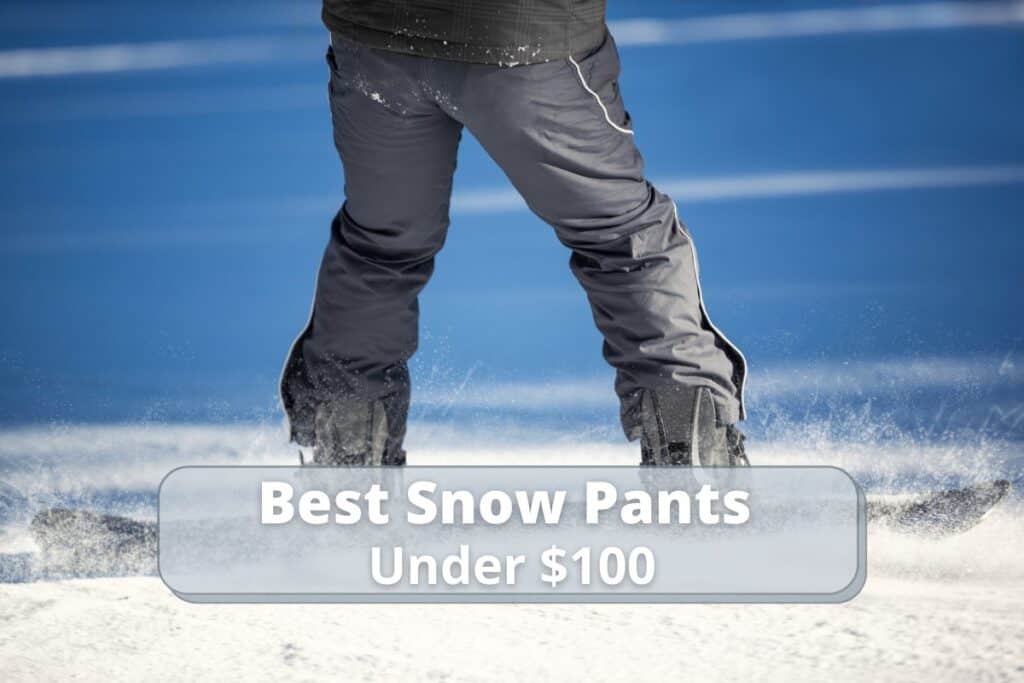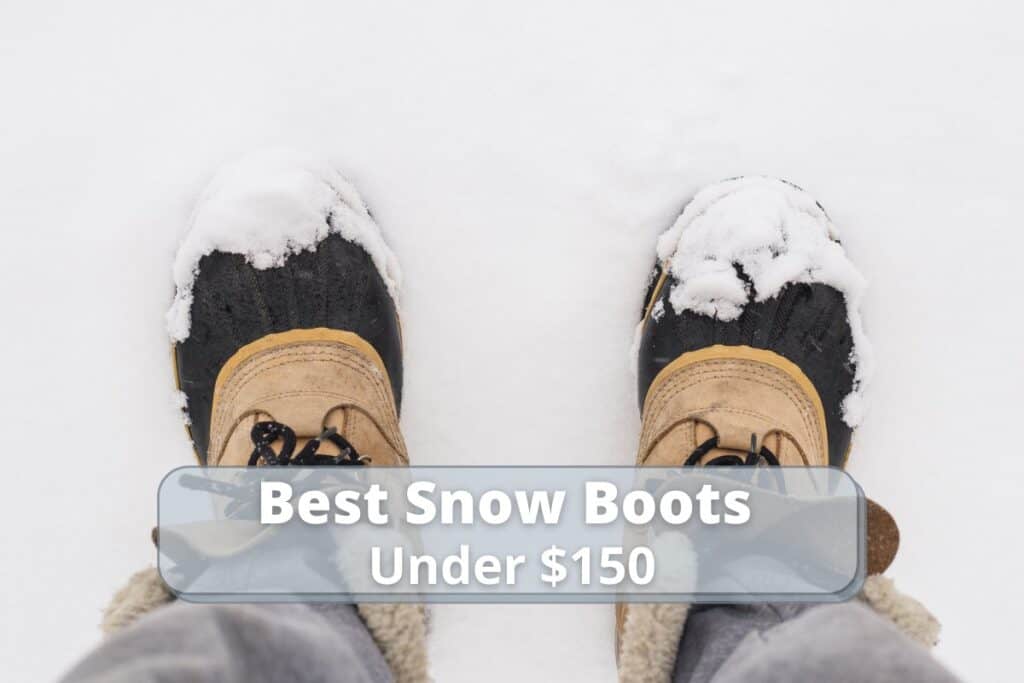The kids have been chattering incessantly about a snow fort, and you caved and promised you’d make one during the next snow. Now that the flurries are piling up on the ground, you’re having second thoughts. Are snow forts dangerous?
Snow forts can be dangerous if you don’t build them to be structurally sound enough. The fort can collapse when the kids are inside, leading to health risks such as hypothermia, frostbite, broken bones, internal injuries, and even death.
This article isn’t designed to scare you but rather, often a sobering dose of reality so you and your family can be prepared when building a snow fort this winter. Make sure you keep reading, as you won’t want to miss this.
Can a Snow Fort Collapse?
A snow fort is a fun, fantastic way for the kids to spend a wintry weekend or a snow day. They’ll love the privacy the fort affords them, but amusement can quickly turn tragic if you’re not careful.
Snow forts can always collapse, injuring and possibly even crushing the inhabitants inside.
What can cause the collapse? Let’s go over that information now.
Poorly-Built Structure
By far, the most common cause of a collapsing snow fort comes down to structural issues.
If you’ve never built a snow fort before or if you do build one but you don’t follow the correct instructions, then your fort can absolutely collapse.
It might not happen the moment the fort is erected but could be hours or even days later.
Using a poorly-built snow fort is like being inside a ticking time bomb. At any point, the whole structure can go.
Your kids won’t be able to tell that the snow fort isn’t necessarily structurally sound. They’ll just be so excited to have a snow fort all to themselves that that will be the most important thing to them.
As the parent and adult, it’s your responsibility to discern whether the fort is in usable condition.
Melting Snow
Even if you build your snow fort properly, that’s not to say it will be designed to stand forever.
Once the temperatures reach 32 degrees Fahrenheit and climb above that, snow will melt.
Gradually, or perhaps more progressively (that depends on the weather forecast), the snow that comprises your fort will diminish more and more.
It’s now dangerous for your kids to use the snow fort, as you can’t say anything about the fort’s structural stability considering its compromised state.
Too Much Physical Movement
A snow fort is for chilling, literally and figuratively. If the kids begin roughhousing in the fort, then no matter how well you built it, the whole structure can come toppling down in a matter of minutes.
Strong Winds
Although winds can keep the temperatures cold, they can also erode the structure of the snow fort more and more.
This is again a slower process but one that eventually makes the snow fort very dangerous to be inside of.
For details on how to build a snow fort or igloo, click here.
Visit Our Winter/Snow Page for More Great Content!
What Kinds of Injuries Can Occur After a Snow Fort Collapse?
A snow fort collapse might sound like no big deal, but for a child, it’s anything but.
Imagine how, as an adult, you would feel if you were caught in an avalanche. That’s more akin to the severity of a snow fort collapse to a child.
Their smaller bodies are much more prone to these injuries as a result of the collapse.
Broken Bones
Snow is heavier than it looks, especially the tightly-packed, icy snow that you’ll use to build a snow fort.
The average weight of snow that’s been around for several days is 15 pounds a cubic foot. That means that at least 15 pounds of weight could come down on your child all at once, but possibly twice or even thrice that weight.
That could very likely lead to broken bones or, at the very least, fractures.
If your child suffers broken bones, they’ll find it nearly impossible to try to dig themselves free, which can make an already bad situation even worse.
Internal Injuries
The weight of snow is not only enough to break bones but could possibly cause internal injuries as well.
These injuries are likely to affect the child’s midsection but could harm the head as well.
Internal injuries are very serious no matter whether they occur in children or adults. What’s so scary about internal injuries is that they can be nearly impossible to detect since they don’t always carry outward symptoms.
You should always bring your child to the hospital if they experienced a snow fort collapse to get them checked out for potential internal injuries.
Frostbite
We mentioned before that an injured child will find it very difficult to escape from the snow after a snow fort collapse. Even an otherwise healthy child might struggle with the same task because the snow is simply too heavy.
If you don’t find your child or children in the rubble immediately, then they could develop frostbite.
Frostbite begins with a prickly feeling across the skin that leads to numbness.
The skin can also change colors, first turning red, then white, then grayish or bluish. The latter is the most severe and denotes deep frostbite.
Rewarming the frostbitten areas, ideally with the assistance of a medical professional, might be able to help. Superficial frostbite cases are very often recoverable, but more serious cases of frostbite might not be.
Hypothermia
Prolonged exposure to the cold can also lead to hypothermia in children.
Children already lose body heat fast, so when stuck under a pile of snow, the rate of body heat loss is only going to accelerate.
A child with hypothermia might develop blue, puffy skin, especially in exposed areas. They could experience limb numbness and body shivers as well.
Can You Die If a Snow Fort Collapses on You?
While injuries are indeed a very real possibility if a snow fort collapses, they’re not the most serious consequence by far, even among the more severe injuries.
Unfortunately, kids can also die in a snow fort collapse.
That’s exactly what happened in early 2019 to a young girl named Esther Jung in Illinois.
As reported by Yahoo! Life, Jung and a friend were playing on a snowbank outside of a church. Their parents were inside the church.
The snowbank collapsed, and it was an hour before anyone found the children. By that point, Jung was in cardiac arrest from her asphyxia and hypothermia. She died not too long after.
Her friend was okay.
The Yahoo! Life article mentions a case of a girl from Canada who died in 2018 after being crushed by a snow pile and another girl in Canada who died in 2007 in an incident involving a snow tunnel.
What kills the children? If not the physical impact of the collapse, then it’s snow immersion suffocation.
You see, breathing in all that air they’re trapped with can cause a child to develop carbon dioxide poisoning very quickly, and death can follow not even 15 minutes later.
How Do You Build a Safer Snow Fort?
We just published a post full of snow fort-building tips that we highly, highly recommend you check out before you build your own snow fort for the kiddos.
A snow fort should be made of snow bricks. The bricks must be held together with water as well, as water acts as the glue that keeps the snow together and makes the snow fort more structurally secure.
If you can, build a snow fort sans the roof. Carve out the walls so they’re light and thin so that if they do fall, it won’t be as detrimental as it could be.
More Snow Fort Safety Tips
We have a few more safety tips for both building and playing in a snow fort. We hope these tips keep your family safe this winter!
Set Ground Rules for Usage
Remind your kids that the snow fort is not for playing, fighting, or roughhousing. If they want to sit inside the fort and chat or make outlines in the snow, that’s fine.
Should your kids be in the mood to burn off more energy, then they should exit the snow fort and play outside in the snow.
If they get too rambunctious while inside the fort, then as we established already, the fort could collapse.
Only Let the Kids Use the Snow Fort with Adult Supervision
In many of the cases where children die from snow fort or snow structure collapses, it’s due to a lack of adult supervision.
Most kids who experience these unfortunate incidents are old enough to play outside by themselves.
Giving your children freedom is great, but when it comes to playing in a snow fort, you need to keep an eagle eye on the kids.
Yes, they’re going to be annoyed that you’re watching them so closely, but all you have to do is remind them that it’s for their own good.
If the snow fort happened to collapse, which is always a slight possibility, at least you’d see it happen and could immediately dig your children out.
You might not be able to prevent broken bones or internal injuries, but you could save your kids from hypothermia, frostbite, and snow immersion suffocation.
Reinforce the Snow Fort Every Day
Building a snow fort is not a one-and-done process. If your kids are going to use the fort over several days, then for each day the fort is standing, you must reinforce it with water.
You can dump a few buckets of water around the structure (concertedly so you don’t create any weak spots) or spray the exterior of the snow fort with a garden hose if that’s feasible.
Before you welcome the kids to the snow fort for another day, you should also check that wind hasn’t buffeted it, that wild animals or other neighborhood kids haven’t accidentally weakened the structure, and that the snow hasn’t begun to melt.
In any of those situations, you should not permit the kids to use the snow fort.
Should You Build a Snow Fort with Powdery Snow?
If you are stuck with powdery snow, it will be a little more challenging to build a snow fort, but it can be done with a few extra steps and some patience.
First, let’s discuss why powdery snow isn’t the best type to build things with. Powdery snow is also called dry snow due to its low moisture content. While the perfect consistency of water to snow is about 15% to build any structure, powdery snow has a moisture content of only around 3%.
This dry or powdery snow is difficult to work with as it doesn’t stick together. It will crumble in your hand like powder, hence the name.
You may wonder if there is a way to use powdery snow when building a snow fort. The short answer is yes. Adding some water from a garden hose or watering can add moisture to the snow, thus making it more wet and sticky.
It’s best to only add a little water at a time to avoid over-saturating it and ending up with a slushy mess. I like spraying a pile of snow lightly with the outdoor hose. It is the fastest way to get the job done, but many prefer shoveling snow into a wheelbarrow and adding water to it. Then, you would mix the snow and water until it is of even consistency. The choice is up to you.
Although “wet snow” is easier to work with, you can transform powdery snow into a more pliable and sticky snow with some extra effort.
Stay Warm When Building a Snow Fort
We all know staying outside in the snow for hours making and playing in your snow fort calls for some good snow gear, especially for kids. Check out our top picks for snow jackets, pants, and boots.
The right clothing will make all the difference and make your snow day that much better!
Visit Our Winter/Snow Page for More Great Content!
Final Thoughts
Snow forts don’t have to be dangerous if you build them properly, but you should never be careless. Check the fort every day, reinforce it with water, and only let your children play in a snow fort when supervised by an adult.
If a snow fort collapses, it can be deadly for children, whether that’s from the sheer weight and force of the snow, the hypothermia that can follow, or suffocation from all the carbon dioxide they inhale.
Be safe this winter!
For more snow fun, check out our other article, “All the Things You Can Do with Snow.”



